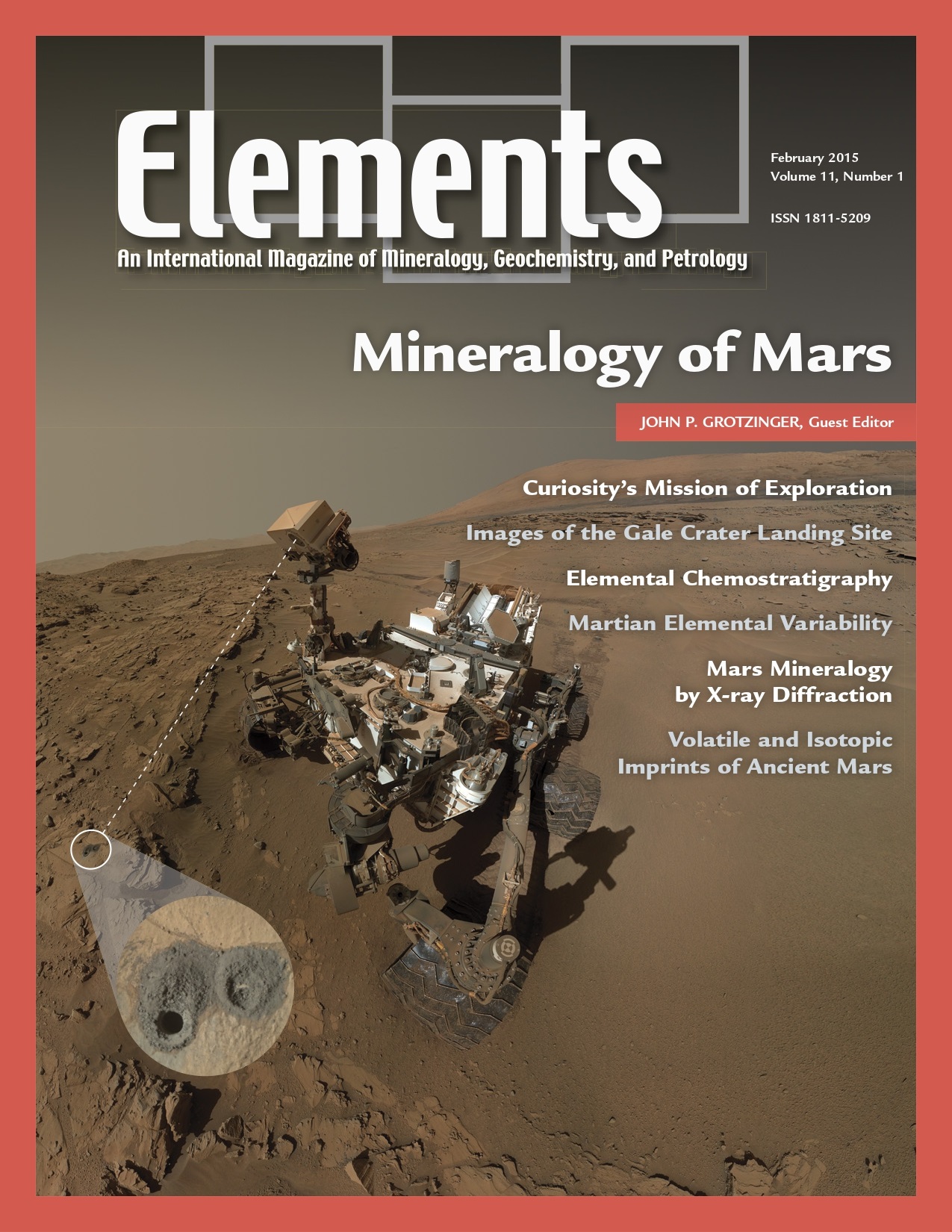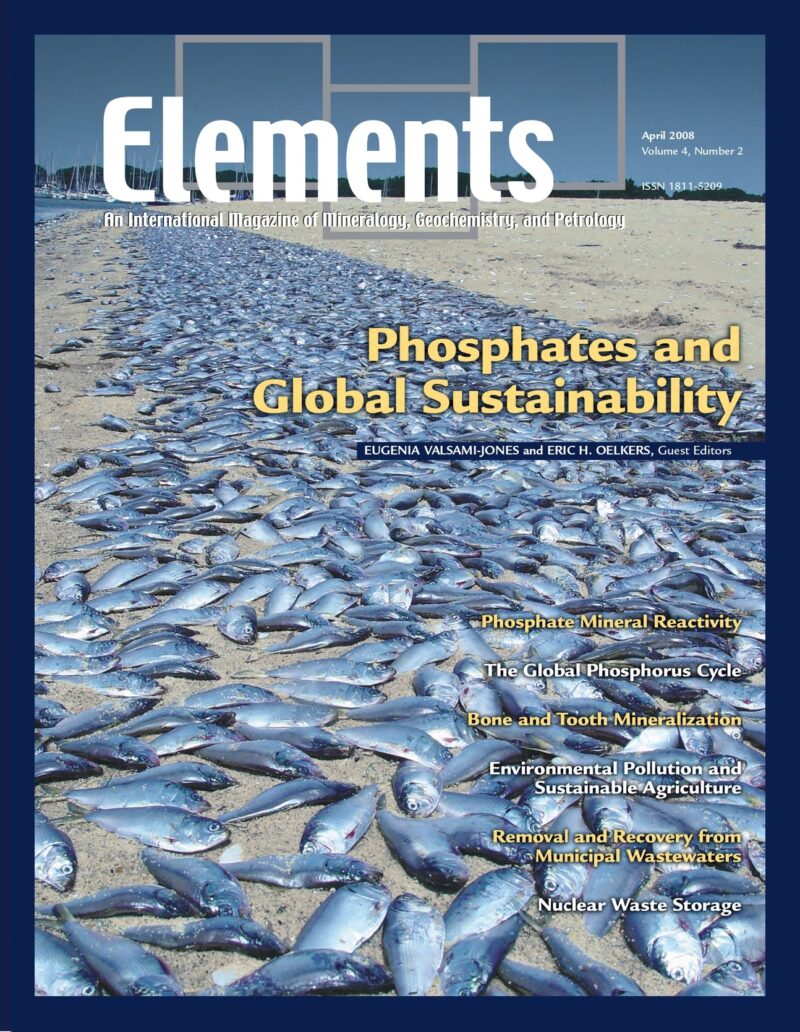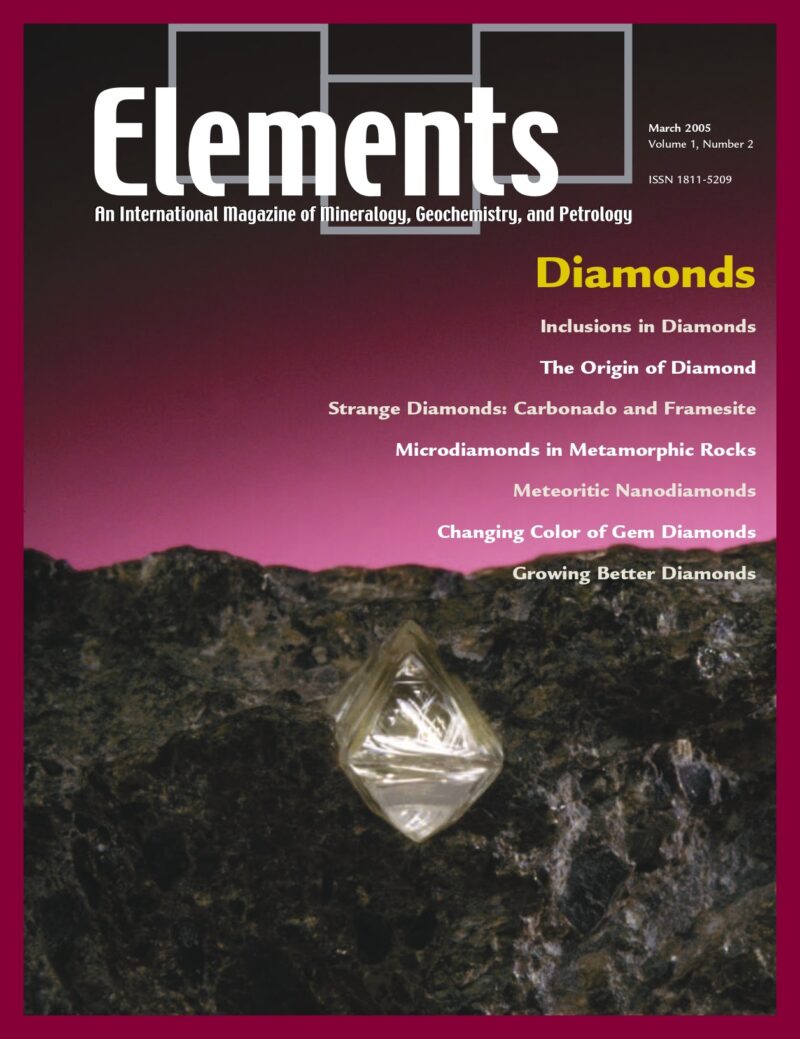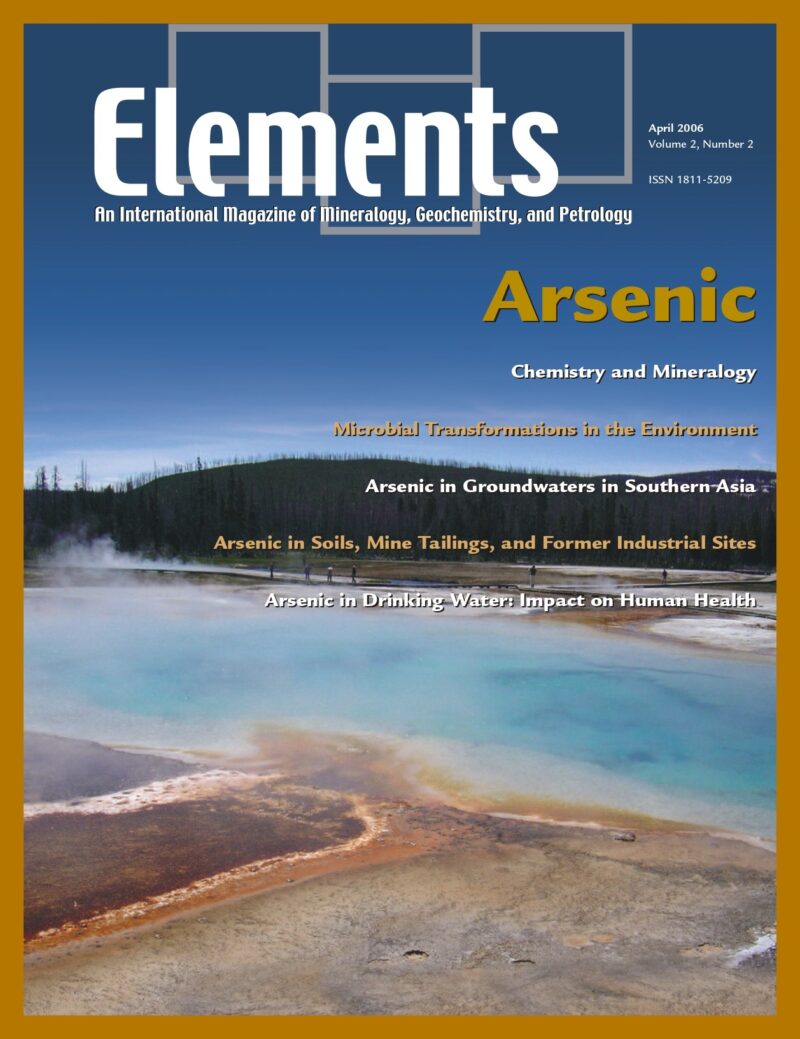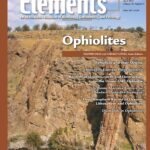
Ophiolites, April 2014, Vol. 10, No. 2
June 28, 2024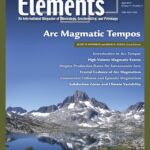
Arc Magmatic Tempos, April 2015, Vol. 11, No. 2
June 28, 2024Mineralogy Of Mars, February 2015, Vol. 11, No. 1
$20.00
The Mars Science Laboratory rover Curiosity touched down on the surface of Mars on August 5, 2012. Curiosity was built to search and explore for habitable environments.
Mineralogy Of Mars
February 2015, Vol. 11, No. 1
The Mars Science Laboratory rover Curiosity touched down on the surface of Mars on August 5, 2012. Curiosity was built to search and explore for habitable environments. The rover has a lifetime of at least one Mars year (~23 months) and a drive capability of more than 20 km. The MSL science payload can assess ancient habitability, which requires the detection of former water, a source of energy to fuel microbial metabolism, and key elements such as carbon, sulfur, nitrogen, and phosphorus. Within 8 months of landing, we were able to confirm full mission success. This was based on the discovery of fine-grained sedimentary rocks, inferred to represent an ancient lake. These rocks (Sheepbed mudstone) preserve evidence of an aqueous paleoenvironment that would have been suited to support a Martian biosphere founded on chemolithoautotrophy and characterized by neutral pH, low salinity, and variable redox states for both iron and sulfur species. C, H, N, O, S, and P were measured directly as key biogenic elements. The environment likely had a minimum duration of hundreds to tens of thousands of years. These results highlight the biological viability of fluvial–lacustrine environments in the ancient history of Mars and the value of robots in geologic exploration.
Why You’ll Love Elements Magazine:
- Expert Contributors: Articles written by renowned researchers in the field of geoscience.
- Engaging Content: Join a community of readers who are passionate about Elements.
- Exceptional Quality: Each issue is printed on high-quality paper with stunning visuals and detailed illustrations that bring complex scientific concepts to life.
Order your copy of the February 2015 issue of Elements magazine today and explore the mineralogy of Mars.
Related products
-
Phosphates And Global Sustainability, April 2008, Vol. 4, No. 2
$20.00Phosphorus is a unique element: it is essential to the existence of all living forms, and as such controls biological productivity in many terrestrial and marine environments; but when in excess, it leads to uncontrollable biological growth and water-quality problems. This has become a common environmental issue, resulting from our careless use of phosphorus in agriculture, yet phosphate ore deposits, from which fertilizers are produced, are a finite natural resource.
-
Diamonds, March 2005, Vol. 1, No. 2
$20.00Diamond, the fascinating ultrahard mineral, is the focus of considerable interest and scientific research. Recent advances particularly relevant to geoscientists include: diamond as a recorder of Earth processes from the perspective of inclusions, chemistry, and conditions of formation; synthesis for research applications and processing to modify color and physical properties, important to diamond gems and anvils; the implications of nanodiamonds from meteorites.
-
Arsenic, April 2006, Vol. 2, No. 2
$20.00Arsenic is an element known throughout history as a classic poison. Currently, very small but highly significant concentrations of this element in drinking water supplies are causing massive health problems to many millions of people in some of the world’s poorest nations, and more localised sources related to mining and processing are also a concern.

